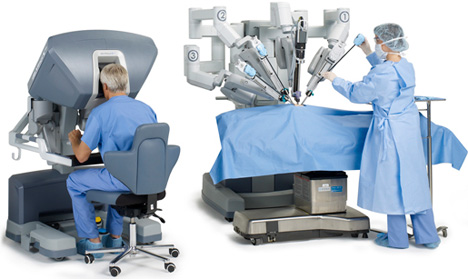Cancer
Cancer is defined as the uncontrollable proliferation of abnormal cells anywhere in the body. There are nearly 200 different types of cancer.

Causes
Anything that causes a normal body cell to develop abnormally has the potential to cause cancer. The main categories of cancer-related or causative agents include chemical or toxic substances exposure, ionising radiation, certain infections, and human genetics.
Symptoms
Cancer symptoms and signs vary depending on the type and grade of cancer. Nevertheless, while general signs and symptoms are not extremely specific, the following can be seen in patients with various cancers: Fatigue, changes in bowel, weight loss, unusual bleeding, persistent cough or voice change, pain, skin changes, or bladder function, fever, lumps, or tissue masses.
Types of cancer
Carcinoma: Cancer that develops in the skin or in tissues that line or cover internal organs, including “skin, lung, colon, pancreatic, and ovarian cancers,” epithelial, squamous, and basal cell carcinomas, melanomas, papillomas, and adenomas.
Sarcoma: Cancer that originates in bone, cartilage, fat, muscle, blood vessels, or other connective or supportive tissue – “bone, soft tissue cancers,” osteosarcoma, synovial sarcoma, liposarcoma, angiosarcoma, rhabdomyosarcoma, and fibrosarcoma.
Leukemia: Cancer that begins in blood-forming tissue, such as bone marrow, and causes a significant number of abnormal blood cells to be formed and enter the bloodstream — “leukaemia,” lymphoblastic leukemias (ALL and CLL), myelogenous leukemias (AML and CML), T-cell leukaemia, and hairy-cell leukaemia.
Lymphoma and myeloma: Cancers that start in immune system cells – “lymphoma,” T-cell lymphomas, B-cell lymphomas, Hodgkin’s lymphomas, non-Hodgkin’ lymphomas, and lymphoproliferative lymphomas (LPL)
Cancers that begin in the brain and spinal cord tissues — “brain and spinal cord tumours,” gliomas, meningiomas, pituitary adenomas, vestibular schwannomas, primary CNS lymphomas, and primitive neuroectodermal tumors.
Cancer treatment with robotic surgery
People are frequently misled by the phrase “robotic.” Surgery is not performed by robots. The surgeon is the one who performs surgery with a computer-controlled robot. Typically, surgeons make extensive incisions in the skin and muscles to allow them to see and work directly on the region of concern. This is known as open surgery. Many procedures can now be performed with minimally invasive laparoscopic or robotic-assisted techniques.Both minimally invasive surgical procedures necessitate a few small incisions through which cancer physicians place surgical instruments and a camera for viewing. Laparoscopic surgery involves surgeons performing surgery with special long-handled equipment while watching magnified pictures from the laparoscope (camera) on a video screen.
Robotic surgery is a type of minimally invasive surgery in which the surgeon sits outside the operating room on a console or computer and performs surgery with the assistance of a computer-controlled robot.
What to Expect from Robotic Surgery?
The general steps of robotic-assisted surgery are:
The surgeon makes microscopic incisions in the body (one to two centimeters long).
A small robotic instrument and a powerful camera are inserted into the body by the surgeon.
The surgeon then directs the procedure from a nearby console (a huge computer). The area of operation can be seen substantially enlarged and with superb resolution at the console.
The surgeon manipulates the controls while sitting at the console.
These movements are detected by the devices and translated into precise, real-time movements within your body.
The robotic instruments, which have better dexterity and range of motion than humans, enable the surgeon to do delicate procedures in difficult-to-reach areas.
Cancer treatment with robotic surgery
Robotic surgery has emerged as a new standard of care for numerous cancers, including urological, gynecological, colorectal, and transoral procedures. These organ-based operations have also been approved by the FDA. Following its success in the aforementioned areas, robotic surgery is now becoming recognised in upper GI and thoracic surgery as well.
The minimally invasive method of oncological surgery is typically motivated by improved perioperative outcomes, functional outcomes, minimum comorbidities, and intact oncological principles.
The perceived appropriateness of robotic surgery for radical hysterectomy and lymph node dissection for the treatment of cervical cancer has increased significantly. By 2012, 75 percent of responders preferred robotic laparoscopy over traditional laparoscopy for cervical cancer.
Robotic surgeries that are commonly performed include:
Prostatectomy with radical resection
Robotic radical nephrectomy is a surgical procedure that removes the kidneys using a robot.
Surgery for the Colorectal Tract (Total Mesorectal excision, TME)
Robotic surgery performed through the mouth (TORS)
Other gynaecological operations, such as radical hysterectomy
Advantages of robotic surgery
The pain has been reduced.
Reduced infection and complication risk
Blood loss is reduced (fewer transfusions)
fewer hospitalizations
Improved cosmosis
Return to normal activities faster
For cancer treatment and robotic surgery, book your appointment with Dr. Anushumala, one of the leading gynecologists at Kokilaben Ambani hospital in Mumbai.
